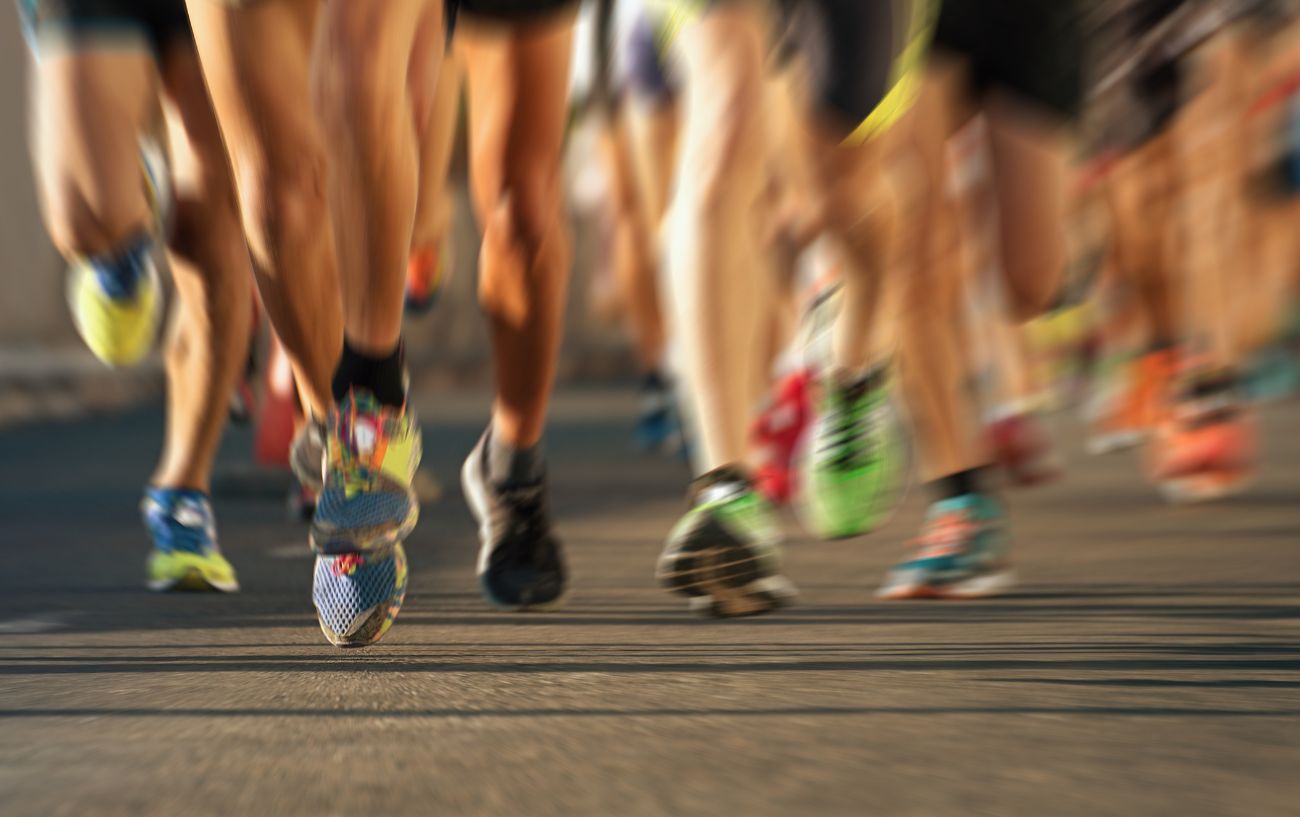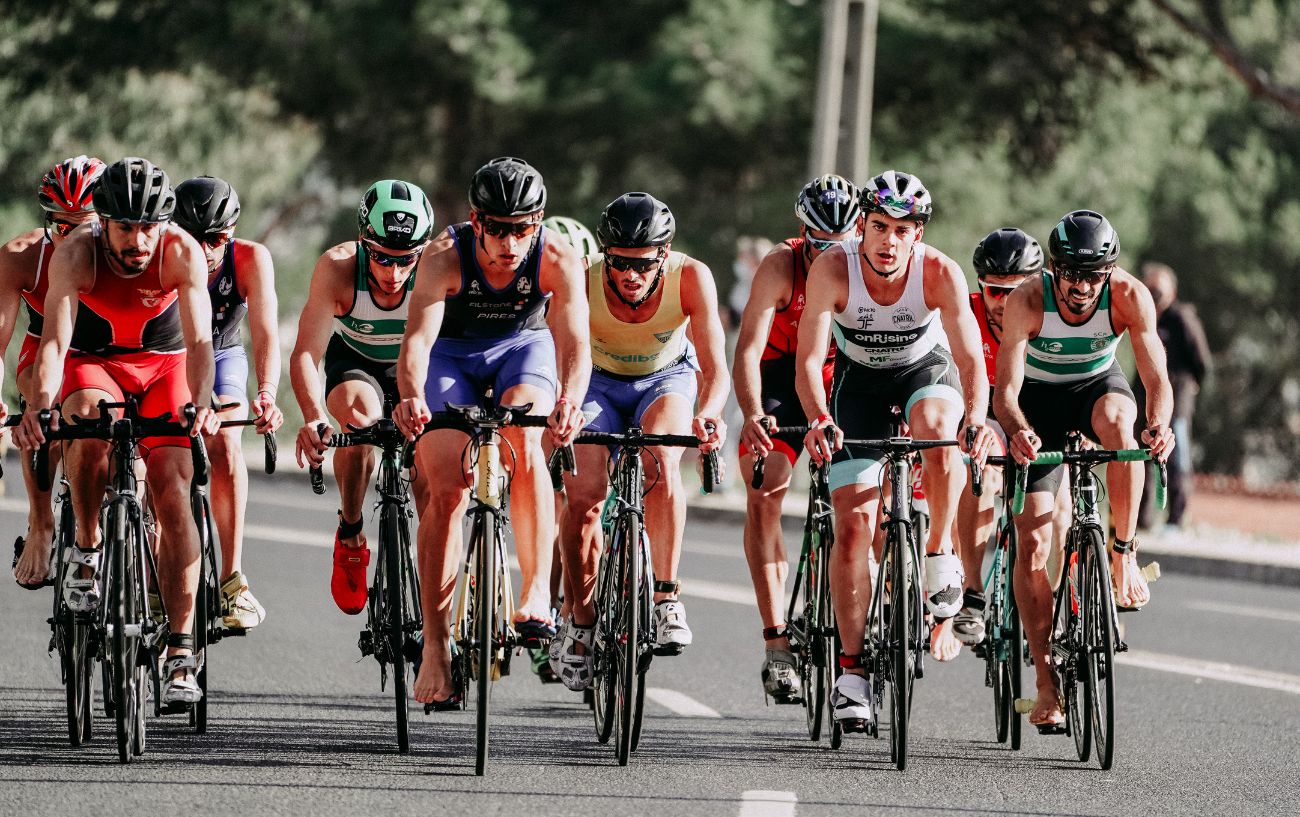Drafting has long been a well-known tactic in elite cycling, where riders position themselves behind others to reduce wind resistance and conserve energy. But it’s not just for cyclists—runners can benefit from drafting too.
This strategy took center stage in the running world in 2019 when Eliud Kipchoge famously used a rotating team of pacers in a V-formation to minimize air resistance and successfully run the first sub-two-hour marathon. While that event was a controlled and unofficial setting, it sparked widespread discussion about the real impact of drafting in distance running.
In truth, drafting isn’t new to running. Roger Bannister strategically used pacers when he broke the four-minute mile in 1954. More recently, in 2025, Faith Kipyegon’s Breaking4 attempt also leaned heavily on carefully placed pacers to optimize conditions.
So, what exactly is drafting, and does it really make a performance difference for both everyday runners and elites? Let’s break it down and explore how this tactic might help you save energy and even shave precious seconds off your race times.

What Is Drafting In Running?
Drafting is a racing tactic that involves following closely behind another athlete (or car in the case of car racing) within the “wake” of the leader.
The purpose of drafting is to conserve energy.
Drafting can improve performance and reduce energy expenditure by blocking the wind and reducing the air resistance that you have to overcome to sustain your forward velocity.
Drafting also allows you to capitalize on the wake created by those in front of you, which helps ‘pull you along’.
The closer you are to the person in front when drafting, the more significant the energy savings.
The World’s Most Famous Draft: Eliud Kipchoge Breaks 2 Hours
In Vienna on October 12, 2019, Eliud Kipchoge, with the support of Ineos, became the first person ever to break the two-hour marathon barrier, crossing the finish line at 1:59:40.2.
His secret? Precision training, a steadfast and determined mental attitude, the perfectly flat road race course, an expertly crafted race strategy, and… optimal drafting position.
To reap the maximum effects of drafting, Kipchoge constantly had a team of five rotating elite runners in a V shaped formation running ahead of him. These athletes acted not only as pacers, but they also created a slipstreaming effect for Kipchoge to run through still air.
According to a fascinating study1 da Silva, E. S., Kram, R., & Hoogkamer, W. (2022). The metabolic cost of emulated aerodynamic drag forces in marathon running. Journal of Applied Physiology, 133(3), 766–776. https://doi.org/10.1152/japplphysiol.00086.2022, his reduced aerodynamic drag likely saved Eliud Kipchoge 3:42 during his world record-breaking run!

The Science Behind Drafting: How It Boosts Running Performance
►Cyclists use 39% less energy at the back of the pack
In one classic study2 McCole, S. D., Claney, K., Conte, J. C., Anderson, R., & Hagberg, J. M. (1990). Energy expenditure during bicycling. Journal of Applied Physiology, 68(2), 748–753. https://doi.org/10.1152/jappl.1990.68.2.748 investigating the energy savings of drafting in cycling found that cyclists who were in the back of a pack of eight riders biking at 40 km/h used 39% less energy than when they reached the same cycling speeds on their own.
Drafting behind a vehicle at this speed reduced the energy cost of cycling at 40/mph even more (62 percent).
►The faster you are moving, the more wind resistance you experience
As your running speed increases, wind resistance becomes a bigger force working against you, making it harder to maintain your pace without expending more energy.
►Drafting is more effective in cycling than in running
Therefore, because cyclists ride much faster than even the fastest runners run, and there isn’t as much of a wake created by running vs. cycling, there are more potential benefits of drafting while biking vs. running.

► When sprinting on a calm day, air resistance accounts for 7.8% of energy expenditure
For example, one study3 Davies, C. T. (1980). Effects of wind assistance and resistance on the forward motion of a runner. Journal of Applied Physiology, 48(4), 702–709. https://doi.org/10.1152/jappl.1980.48.4.702 did not specifically look at the energy consumption savings or performance benefits of drafting while running, but it did investigate the impact of wind and air resistance on effort and energy cost.
Results indicated that the energy cost of overcoming the air resistance on a calm day when running outside was 7.8% for sprinting at a speed of 10 m/s (a pace of 10 seconds for 100 meters), 4% for middle-distance running at a pace of 6 m/s (2:13 for 800 meters or about 4:27 per mile), and 2% for marathon distance running at 5 m/s (5:22 per mile).
The energy cost of running when running into a headwind will be significantly greater4 Pugh, L. G. C. E. (1971). The influence of wind resistance in running and walking and the mechanical efficiency of work against horizontal or vertical forces. The Journal of Physiology, 213(2), 255–276. https://doi.org/10.1113/jphysiol.1971.sp009381.

►The slower you run, the lower the energy-sapping effect of air resistance
However, the good news is that for everyday runners, the impact of air resistance on the energy cost of running is minimal because most recreational runners are training and racing at nowhere near 5:22 per mile pace.
The slower you run, the lower the effect of air resistance on your energy consumption to maintain the same forward velocity or running speed.
► Drafting behind a group of runners = more effective than drafting behind 1 runner
Another difference between drafting in running vs. drafting in cycling is the size/geometry and the resultant effectiveness of the “shield“ formed by the person you are drafting behind.
Essentially, drafting on the bike or while running is only as effective as the amount of coverage or blocking you are getting from the person in front of you.
With running, tucking behind one runner is unlikely to provide as much of a shield from the wind. You would need to be behind a much larger person to get decent coverage and blocking or right in the back of a large pack of runners5 Schickhofer, L., & Hanson, H. (2021). Aerodynamic effects and performance improvements of running in drafting formations. Journal of Biomechanics, 122, 110457. https://doi.org/10.1016/j.jbiomech.2021.110457.
With that said, there are actually studies that have found there to be a pretty significant reduction in energy cost when runners draft behind a single runner.

► Drafting reduces oxygen consumption
For example, one study6 Pugh, L. G. C. E. (1971). The influence of wind resistance in running and walking and the mechanical efficiency of work against horizontal or vertical forces. The Journal of Physiology, 213(2), 255–276. https://doi.org/10.1113/jphysiol.1971.sp009381 looked at the impact of drafting while running in a wind tunnel.
They found that drafting significantly reduced oxygen consumption (which essentially equates to energy expenditure).
Therefore, if we extrapolate from this study, the performance benefits of drafting while racing would equate to a savings of about 105 seconds or 1 minute and 45 seconds over a marathon (26.2 miles).
At the elite level, this is an enormous amount of time, and it’s reasonable to surmise that drafting in marathon running would be especially beneficial given the long, continuous effort of the race and the resultant implications of saving energy throughout the course of the race.
It may even be that you will experience significant glycogen sparing by running at a lower oxygen consumption or relative intensity, allowing you to maintain the same intensity or pace without hitting the wall when your glycogen is prematurely depleted.

► Not all drafting formations are created equal
Another study7 Schickhofer, L., & Hanson, H. (2021). Aerodynamic effects and performance improvements of running in drafting formations. Journal of Biomechanics, 122, 110457. https://doi.org/10.1016/j.jbiomech.2021.110457 on drafting while running found that certain drafting formations can be more effective than others in reducing energy costs while running.
The best drag formations were able to reduce drag for the target runner by up to 76.5%.
However, there are other formations for drafting in racing that may actually increase the energy cost of running while drafting. For example, when runners are on the sides of one another, drag can actually increase due to the local acceleration of the passing airflow.
Researchers concluded that drafting in running can improve running economy by 3.5% when the best drafting formations are used. This energy savings translates to a 2.3% increase in running speed, or 154 seconds (about 2 minutes and 34 seconds), over the distance of a marathon.
► Drafting can give a psychological boost & reduce RPE
Overall, drafting may reduce the energy cost of running and improve performance. According to physiologists, some of this may also be attributable to a psychological boost8 Zouhal, H., Abderrahman, A. B., Prioux, J., Knechtle, B., Bouguerra, L., Kebsi, W., & Noakes, T. D. (2015). Drafting’s Improvement of 3000-m Running Performance in Elite Athletes: Is It a Placebo Effect? International Journal of Sports Physiology and Performance, 10(2), 147–152. https://doi.org/10.1123/ijspp.2013-0498 of the reduced perceived exertion when drafting behind other runners, particularly at high intensities or in windy conditions.
For another interesting read about potential advantages that can be gleaned when running, check out our article about carbon fiber-plated running shoes:












